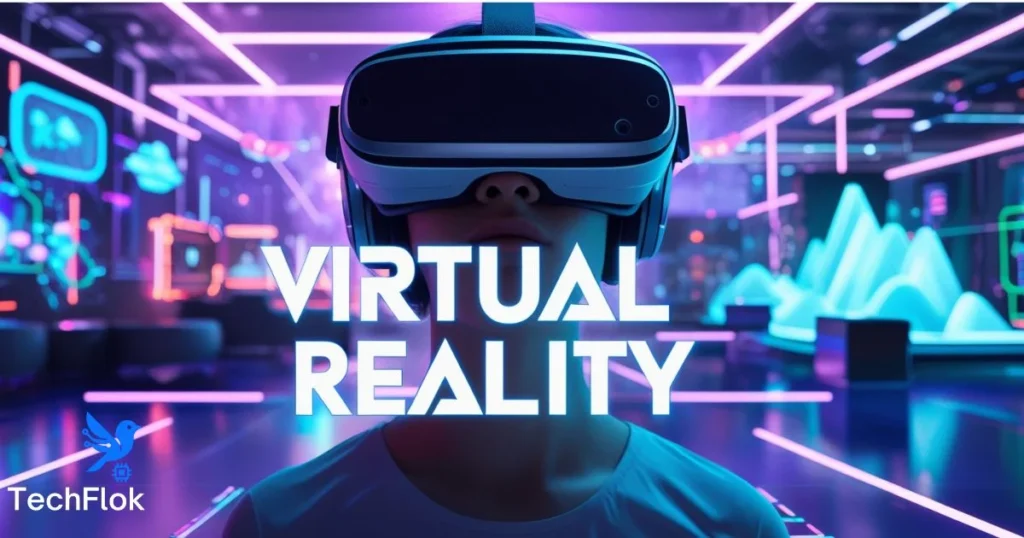
Virtual reality (VR) apps are changing the world. Expanding the world of gaming, transforming the healthcare industry, and enhancing the functionality of various businesses, VR apps are more than just a technological novelty. The global VR market is projected to reach approximately $44.4 billion, with expectations to grow to around $284.04 billion by 2034, reflecting a compound annual growth rate (CAGR) of 22.90% according to Precedence Research.
VR Apps are becoming an integral part of various industries. But what are VR apps exactly, and why are they becoming more common? This article will answer the questions, analyze the definition, growth, and trends in the market regarding the use of VR apps.
What a VR App Means Today
A VR app is a software used to create immersive environments. VR apps enable users to interact with a simulated world within the VR space using headsets, gloves, and other specialized equipment. In contrast to ordinary applications, VR applications are built with advanced technology, offering graphics and real-time rendering to give users an experience that is almost identical to the real world.
VR applications are utilized in various fields, including gaming, healthcare, education, social interaction, and the workplace. The ability to step into a digital world is a game-changer in the realm of technology.
Top Game-Changing Categories
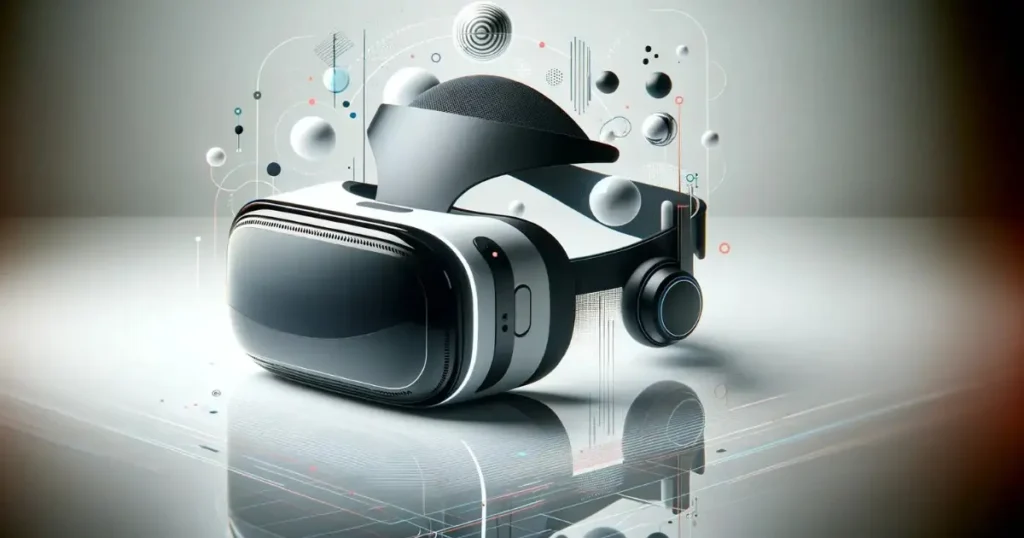
Gaming and Immersive Entertainment
While users can interact with the game world in 360 degrees using traditional gaming consoles, the most immersive VR gaming apps gamify environments, allowing VR users to interact with game worlds in virtually limitless ways. The apps opened new frontiers of interactive entertainment, extending beyond the standard gaming narrative, which had previously confined users to more limited game worlds. The gaming sector transformed VR apps into a preferred gaming platform.
Education and Remote Learning
“Experience-based” learning goes best with the new VR apps catered for educational purposes. By 2025, VR education apps will enable students to engage with and interact with various subjects in dynamic and innovative ways, surpassing the limitations of traditional methods. Picture a history lesson that involves walking through ancient Rome, or a biology class that lets you explore the human body.
VR learning applications have made valuable contributions to both classroom and remote education. Value-added offerings, including simulations and virtual field trips, provided synchronously and asynchronously, elevated student engagement. The study reports published in 2024 have indicated that this immersive exercise method improved learning retention by 90percent.
Health Care, Therapy, & Well-being
In Healthcare, VR applications have a significant impact on treatment and training. For chronic pain management, EaseVRx has been effective in pain reduction and VR therapy paired with cognitive behavioral therapy and relaxation techniques. These VR therapy applications have been gaining popularity in clinical settings and have received FDA approval.
VR pain management therapy and Osso VR training simulators enable healthcare professionals to enhance their clinical and surgical skills in a virtual, interactive, simulated environment, ultimately improving patient outcomes. VR therapy software also treats mental health disorders such as PTSD and anxiety, and provides a safe environment for patients where they can gradually confront and work through their fears.
Business Solutions & Workplace Collaboration
VR applications are transforming remote work and collaboration in the business sector. Facebook Horizon and AltspaceVR enable employees to join virtual meetings and collaborate on projects from anywhere in the world. Users “meet” and “work” in virtual spaces, making remote collaboration more intuitive and interactive.
Hosting virtual meetings offers businesses the flexibility to increase productivity by eliminating travel costs. Incorporating mixed reality (XR) and AR, Microsoft, along with other businesses, is expanding the use of VR in the workplace.
Social VR & Virtual Communities
Socializing within virtual worlds is now a common practice. With apps such as AltspaceVR and Horizon Worlds, users can create and navigate virtual worlds where they meet, socialize, attend events, and collaborate on plans. These applications are versatile and flexible, offering users the opportunity to construct immersive social communities, organize virtual meetups, and create avenues for friendship and collaboration.
The growth of social VR applications and digital worlds, such as the Metaverse, is changing the way we interact and socialize. These worlds offer rich experiences, including events like concerts and social gatherings such as virtual parties.
Fitness, Sports, & Mindfulness
For fitness, apps like Supernatural, FitXR, and others let you work out in Virtual Reality. You can do boxing, dance, and even go on a bicycle ride in a VR world. You approach and even integrate health and fitness VR-tailored sessions and social workouts in real-time with friends.
Wellness and meditation have also made significant strides. VR apps enable you to practice mindfulness and meditation with immersive experiences, such as TRIPP. These apps offer soothing virtual environments that can help alleviate stress and improve mental health.
Spotlight on the Most Innovative VR Apps You Should Try
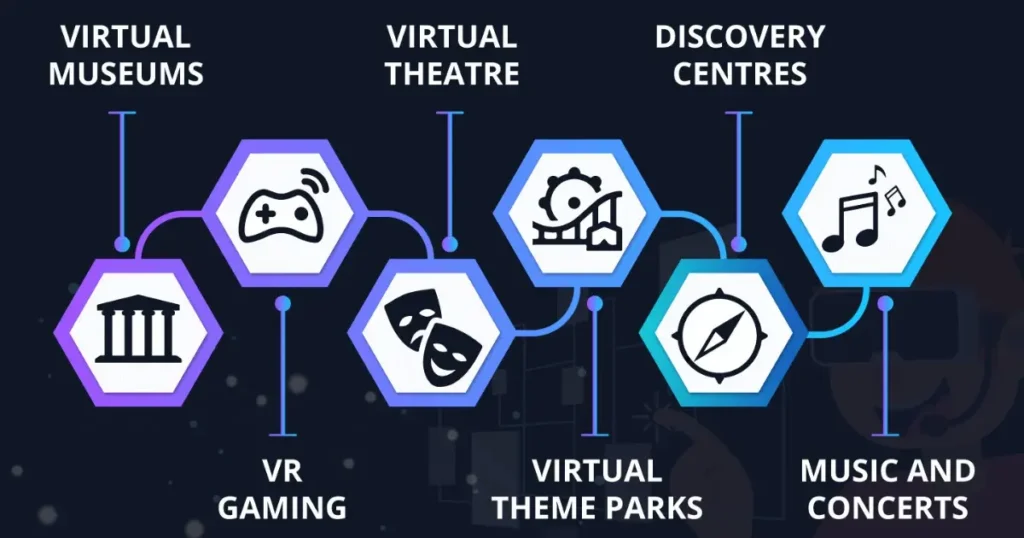
New Launched Apps & Features
With the release of the Oculus Quest 3, there have been advancements in virtual reality apps. These advancements in resolution, comfort, and mobile connectivity have made VR apps seamless.
With new XR Apps, Apple Vision Pro merges AR and VR, and gets the virtual experience more intertwined with everyday life.
Successful Apps
With captivating gameplay centered on rhythm, Beat Saber maintains its dominant position in the VR gaming industry.
Osso VR is gaining recognition in healthcare for its revolutionary surgical training platform, enhancing the skill sets of surgeons through virtual simulations.
Unique Design/User-Experience Lessons
For VR apps to flourish, developers must prioritize user comfort and intuitive design.
Why VR Apps Matter: Key Benefits Backed by Real Use Cases
How VR Can Enhance Learning, Empathy, and Productivity
Empathy-driven VR apps allow users to experience life from another person’s perspective, encouraging understanding and compassion.
Accessibility, Inclusion & Remote Reach
VR apps have exponentially improved accessibility. Users of varying backgrounds and abilities can now experience things that were once impossible. From virtual medical consultations to immersive classroom technologies and educational VR apps, various tools offer solutions that provide services in more inclusive ways.
Data Security & Privacy in VR Environments
With VR apps using and storing sensitive user data, the focus has shifted to securing virtual environments through end-to-end encryption and safe login features.
What’s Holding VR Back: Anything you need to keep in Mind
Technical Constraints (Latencies, Graphics Realism, Hardware)
Advanced VR applications need custom-built hardware. Such equipment can be very expensive, limiting the widespread adoption of VR applications. Additionally, latency and the realism of the graphics can significantly impact the user experience, particularly in gaming.
Accessibility Issues, Comfort & Motion Sickness
VR applications can be significantly enhanced in terms of reducing motion sickness and improving user comfort. VR developers can focus on the most demanding users and meet community expectations by increasing the frame rate, reducing latency, and refining the overall experience.
Quality & Discoverability of Content
As the market for VR applications expands, users are faced with a content saturation dilemma. The newly focused challenge is to supply content of a high standard and provide users with a way to access the top-rated applications within the VR marketplace.
Developer Costs & Scalability for Users
Developing VR applications and their constant use encounter challenges related to costs. Smaller developers, just like users, face the high costs of hardware and developing VR content that is deep and immersive.
Emerging Trends for VR Apps & What’s Next
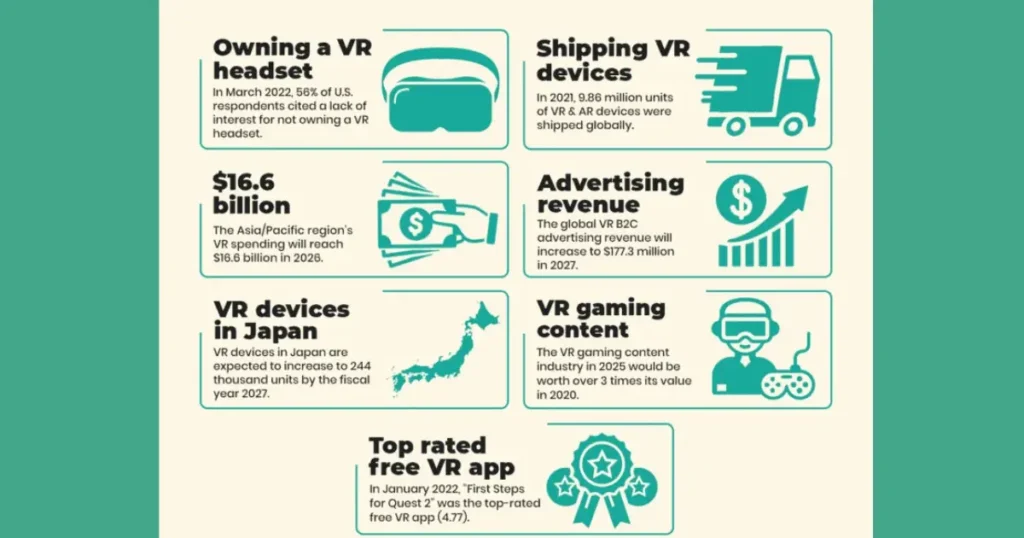
AI + VR: Adaptive Experiences & Procedural Content
AI will be another advancement in VR app development, enabling personalized integration, as driven content will allow these apps to adjust in real-time and in a user-specific way while the user is interacting with the app.
Mixed Reality & XR Convergence
This is a combination of VR and AR, which will bring new opportunities to VR apps by allowing users to interact with both the real and virtual worlds simultaneously.
5G / Edge Computing Enabling Real-Time, Mobile VR
The introduction of 5G technology will enable VR apps to operate in real-time, allowing users to access these apps on the go. This will make daily life integration wonderful as these apps will be immersive, and users will be able to access them whenever they want.
Social VR, The Metaverse & Interoperable Digital Worlds
The new wave of VR apps will be marked by Social VR and the Metaverse, as they facilitate user interaction in pervasive worlds through advanced interconnectivity. Interoperable worlds will allow users to have cohesive and immersive experiences.
Privacy, Ethics & Regulation
To respond to users in an ethical and respectful manner, shifting VR apps require that users’ interaction privacy and data security be protected within simulation environments. Responding to the growing use of VR apps, most Virtual environments call for regulation.
FAQs
Q1: Do I need expensive hardware to use VR apps?
The most basic releases of VR apps can run on smartphones, and there is a continuum of price and performance in VR sets, culminating in expensive ones.
Q2: Can VR apps replace mobile apps?
In the foreseeable future, VR mobility apps are expected to merge with traditional mobility apps.
Q3: How can I develop a VR app?
Knowing 3D modeling and one of the game-building engines, such as Unity, Unreal Engine, and other VR SDKs, to create seamless and immersive VR experiences is a strong start.
Q4: Is it safe? What about health effects?
Excessive use of VR environments can cause health problems, which can be aggravating, such as inducing motion sickness and eye strain. Following the recommended limits and safety guidelines will help prevent overwhelming workouts.
Final Thoughts
VR apps are transforming the way we work, learn, connect with others, and manage our health. As technology advances, the integration of VR apps into our daily activities will continue to expand, creating endless possibilities. Whether it is gaming, education, health care, or social interaction, VR applications will transform our relationship with the virtual world permanently.
